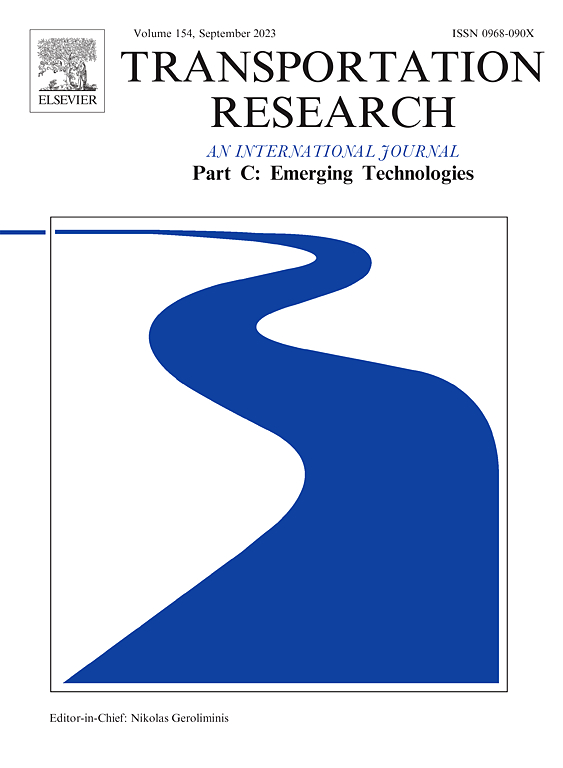A novel game approach to integrating traffic assignment and signal control for enhanced efficiency and environmental performance in mixed networks
IF 7.6
1区 工程技术
Q1 TRANSPORTATION SCIENCE & TECHNOLOGY
Transportation Research Part C-Emerging Technologies
Pub Date : 2025-02-01
DOI:10.1016/j.trc.2025.105017
引用次数: 0
Abstract
The combined traffic assignment and signal control (CAC) has proven to be effective in enhancing the wholistic performance of mixed networks, which includes both expressways and surface streets. This study focuses on addressing the limitations of traditional Stackelberg game-based CAC models, particularly the rigid leader–follower dynamic. We propose an integrated Level-Change-MPC (Model Predictive Control)-VT-Meso-Emission Model (LCMVTM), which incorporates a dynamic role-change function triggered by the compliance rate of users to variable message signs (VMS). This role-change mechanism offers greater flexibility under varying road conditions and simplifies the authority’s task of predicting user routing behavior. Additionally, a Q-learning-based algorithm is developed to balance travel costs and emissions by managing the rate of emission accumulation across control horizons. The results demonstrate a reduction in total travel costs by 11% to over 30%, while emissions decrease by 16.98% to approximately 40% compared to the other different combination of control strategies and MAS/non MAS structured network. The emission accumulation rate also drops by 20% to 43.69%. LCMVTM outperformed the other benchmarks by reducing the number of stop&go per vehicle, resulting in improved efficiency and environmental outcomes.
求助全文
约1分钟内获得全文
求助全文
来源期刊
CiteScore
15.80
自引率
12.00%
发文量
332
审稿时长
64 days
期刊介绍:
Transportation Research: Part C (TR_C) is dedicated to showcasing high-quality, scholarly research that delves into the development, applications, and implications of transportation systems and emerging technologies. Our focus lies not solely on individual technologies, but rather on their broader implications for the planning, design, operation, control, maintenance, and rehabilitation of transportation systems, services, and components. In essence, the intellectual core of the journal revolves around the transportation aspect rather than the technology itself. We actively encourage the integration of quantitative methods from diverse fields such as operations research, control systems, complex networks, computer science, and artificial intelligence. Join us in exploring the intersection of transportation systems and emerging technologies to drive innovation and progress in the field.

 求助内容:
求助内容: 应助结果提醒方式:
应助结果提醒方式:


